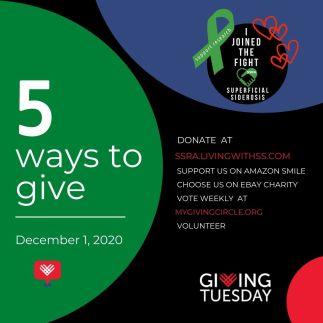Can The Progression Of Superficial Siderosis Be Slowed?
The holy grail of any rare disorder is discovering the cure. With Superficial Siderosis, so far, chelation therapy has offered the only solution for removing the iron. Where does this leave a patient who can’t physically tolerate chelation or can’t afford the cost? Where is the hope?
Are We Looking For The Wrong Answer?
Watching the progression of someone in the later stages of Superficial Siderosis is heartbreaking. While we now have eight volunteers who have generously committed to leaving their brain for future study, those answers will be years away. As a patient community, our end game will always be discovering a way to stop the devastation. Should our priority shift to finding out how to slow cell degeneration? To identify treatment options safely tolerated by every patient, whether or not they are currently on chelation therapy that will be neuroprotective and slow the progression?
A New Direction
2021 will see the launch of our first SSRA sponsored research study designed to explore the possibility that boosting brain urate by treatment with an antioxidant could slow the brain cell degeneration of Superficial Siderosis patients. This project might substantially shorten the time needed to develop a full neuroprotection trial. Optimizing this first study’s crucial characteristics should considerably enhance the likelihood of future therapies.
When Would Enrollment begin?
While we can’t guarantee an exact date, it should open in the first half of 2021. Candidates will need to submit their most current audiology exam and a recent balance assessment. A member of our research team will administer a cognitive assessment remotely via online testing. All data will go to Dr. Levy.
Streamlining Research
The possibility of conducting high-quality clinical research on promising antioxidant candidate therapeutics through a Superficial Siderosis community partnership and the SSRA was first raised by Chief Medical Advisor Michael Levy MD., Ph.D., as a way to reduce the expense. The Michael J. Fox Foundation provided millions in funding for the original study ours will be modeled after. While the SSRA does not have millions, the organization has stepped up fundraising activities to meet this challenge.
Hope Is The Answer
.I watch Gary’s progression down the Superficial Siderosis road with divided feelings. It’s painfully obvious he is getting worse, but I still have hope. After COVID-19 delayed his active bleed surgery for the umpteenth time, his neurosurgeon has reached out to reschedule. I find the possibilities of this first study extremely promising, so all is not lost. If we can identify a way to stop someone from needing a walker or wheelchair, becoming deaf, or able to remain at their job, this will have been worth every effort.
If you would like to support the SSRA fundraising efforts we invite you to either share a #GivingTuesday fundraiser listed on our Facebook page or create your own for the benefit of the SSRA.


